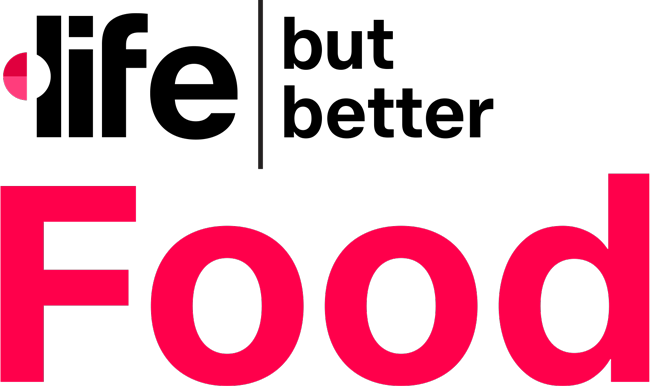For the first time in history, the US Food and Drug Administration has established guidance for levels of lead in processed baby foods that are sold on supermarket shelves and online. The agency’s action, announced Monday, only provides guidance to industry and is not enforceable.
Under the new guidelines, baby food manufacturers should have no more than 10 parts per billion of lead in baby yogurts, custards, puddings, single-ingredient meats, processed fruits and vegetables, and mixtures of fruits, vegetables, grains and meat.
“This includes foods in jars, pouches, tubs or boxes and may include ready-to-eat foods such as purees, as well as semi-prepared foods such as dry infant cereals,” the FDA said in a statement.
However, root vegetables such as carrots and sweet potatoes — which typically contain the highest levels of lead from the soil — and dry infant cereals should contain no more than 20 parts per billion of lead, the FDA announced.
“The guidance does not cover infant formula, beverages, or snack foods like puffs and teething biscuits,” the federal agency said.
No level of lead is safe for infants and toddlers, according to the US Centers for Disease and Prevention, the World Health Organization and the American Academy of Pediatrics.
Parent should not throw away existing baby foods they have purchased or stop feeding young children a variety of foods, the FDA said.
“Eating a variety of healthy foods can make it less likely for an individual to be exposed to the same contaminant from the same food many times and helps to provide the range of nutrients needed for health and, for children, healthy development. Having adequate nutrients stored in the body also can help to prevent lead from having harmful effects,” the agency said.
“To get adequate food variety, the FDA recommends that parents and caregivers feed their children many different foods from the five food groups — vegetables, fruits, grains, dairy, and protein foods — and alternate how often they provide the same food.”
“All of our baby foods meet FDA limits for heavy metals, and we expect that will hold true for the new guidance,” Dana Stambaugh, director of external communications for Nestlé US, said in an email. “Ultimately, our promise is to provide nutritious and safe food for babies.”
FDA’s actions are too little, too late
Organizations that prioritize children’s welfare were quick to react.
“Nearly all baby foods on the market already comply with these limits, making the new standards largely ineffective,” said Jane Houlihan, the national director of science and health for Healthy Babies Bright Futures, a coalition of advocates committed to reducing babies’ exposures to neurotoxic chemicals.
Healthy Babies Bright Futures published a report in 2019 that found toxic metals in 95% of baby foods randomly pulled off supermarket shelves. The report sparked a congressional investigation that discovered some baby food ingredients contain hundreds of parts per billion of dangerous metals, according to internal documents provided by major baby food manufacturers.
The baby food aisle accounts for only a fraction of children and toddler’s exposure to food sources of lead, Houlihan said, pointing to an analysis that Healthy Babies Bright Futures provided the FDA during public comments.
“Lead in infant formula, homemade baby food ingredients and foods bought outside the baby food aisle account for about three-fourths of children’s food exposures to lead,” Houlihan said in an email. “As it stands, the new lead limits for commercial baby foods would reduce children’s total dietary lead exposure by less than 4% — a negligible improvement.”
While applauding the FDA for acting on lead, it’s too little, too late, said Scott Faber, senior vice president of government affairs for the Environmental Working Group, a nonprofit consumer advocacy organization.
“For years, the FDA’s own data has shown dangerous levels of lead in baby food, yet the agency has dragged its feet while children’s developing brains were exposed to this neurotoxin,” Faber said in an email.
“The harm is permanent, and the delay has put countless kids at unnecessary risk,” he added. “The FDA owes parents answers and must enforce these limits immediately to finally protect our most vulnerable population.”
The dangers of lead
As part of the volcanic process that created much of the continents, lead and other heavy metals occur naturally in Earth’s crust. However, manufacturing plants, mining facilities and smelting processes also add heavy metals to the environment as frequent by-products.
Chips from lead-based paint, which was federally banned in 1978, and automobile exhaust fumes from leaded gasoline, which wasn’t banned until 1996, have also polluted soil and water in the US.
It’s not just children who are at risk: There is no level of lead that’s safe for humans of any age, according to the US Environmental Protection Agency. Lead bioaccumulates in the body over time and is a “toxic metal” that can be harmful even at low exposure levels, the agency said.
However, experts say children are especially hard-hit due to their small size and rapidly developing brains.
“A dose of lead that would have little effect on an adult can have a significant effect on a child. In children, low levels of exposure have been linked to damage to the central and peripheral nervous system, learning disabilities, shorter stature, impaired hearing, and impaired formation and function of blood cells,” the EPA states on its website.
The WHO considers lead one of the 10 chemicals of concern in the world. An October 2023 study published in the journal Lancet found children younger than 5 years lost 765 million IQ points in 2019 due to lead exposure worldwide. In the same year, more than 5.5 million adults died from cardiovascular disease due to lead exposure.
“Exposure to very high levels of lead can severely damage the brain and central nervous system, causing coma, convulsions and even death. Children who survive severe lead poisoning may be left with permanent intellectual disability and behavioural disorders,” the WHO said on its website.
Getting ‘Closer to Zero’
The FDA first proposed the new lead levels in 2023 as part of its Closer to Zero initiative, which the agency says strives to lower the levels of arsenic, lead, cadmium and mercury in baby foods. In 2021, the agency acted to lower limits of arsenic in infant rice cereals, a major route of exposure, according to experts.
However, that action was also judged as inadequate to protect children.
“The FDA should set protective targets for reducing exposure to heavy metals with a goal of having no measurable levels in children’s food,” Michael Hansen, senior scientist for Consumer Reports, which has studied levels of arsenic and other toxic metals in baby food, said at the time.
Juice is another major exposure route of heavy metals in children. In 2022, the FDA proposed lowering the limits of lead in juices from 50 parts per billion to 10 parts per billion in apple juice and 20 parts per billion for all other juices. However, that draft guidance has never been finalized.
“The FDA is not living up to its responsibility to protect children’s health,” Houlihan said. “As a result, infants and young children will continue to bear the burden of the FDA’s lack of resolve, consuming harmful lead with every meal.”
The FDA has also not taken any action on levels of other heavy metals, such as cadmium, although that may change, Houlihan said. In September, the agency released an analysis that found “more than half of all children ages 1 to 6 exceed a safe daily dose for cadmium in food,” she said.
According to that report, the main sources of exposure for children are grains, baked goods, fruits and vegetables. Processed baby foods contribute a tiny amount (0.5%) for that age group, Houlihan added.

